|
| |
Family Noctuidae
- This page contains pictures and information about Owl Moths that we
found in the Brisbane area, Queensland, Australia.
-
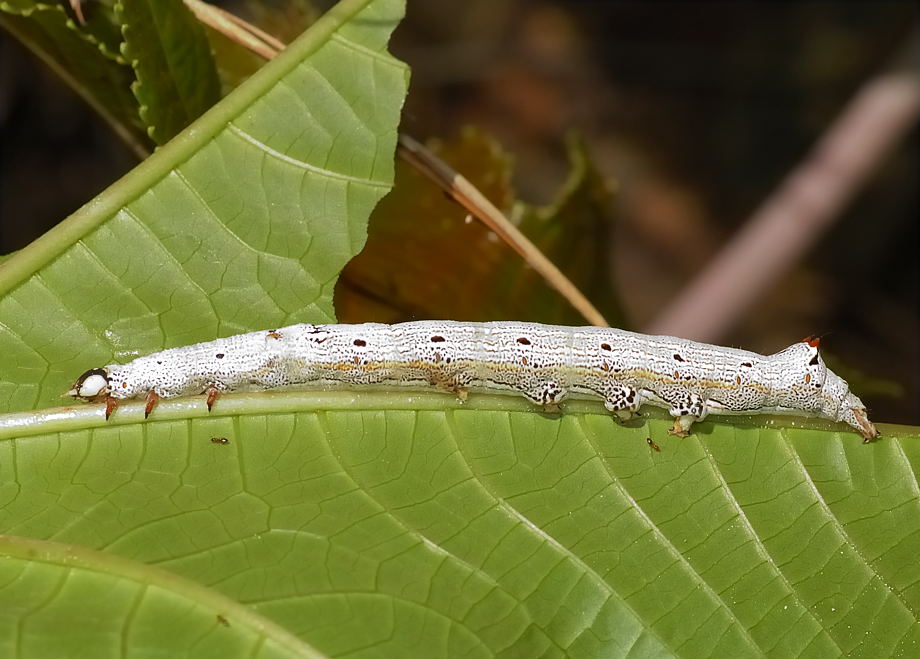 - Caterpillar in subfamily Catocalinae
-
- The caterpillars in this subfamily Catocalinae are usually smooth, lack of
hairs, long and slender.
Some of them have prolegs of segments 3, or 3 and 4 missing and known as semi-looper, move in looping
action. They pupate in a rather scant silk cocoon.
-
-
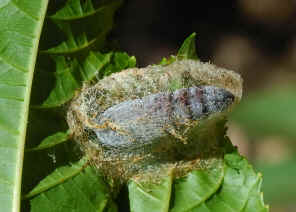
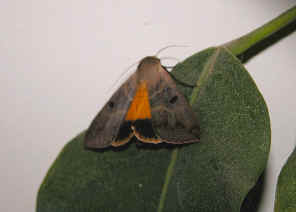
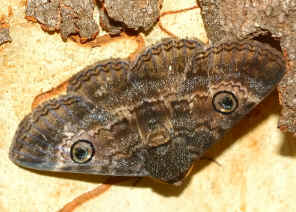
- Cocoon of Catocalinae
Covered colour hind
wings
Eyes pattern on wings
-
- Moths in this subfamily Catocalinae are usually medium to large in size. Most of them
have robust body and broad wings. Some of the them have brightly coloured hind
wings which are normally covered. Some other have eye-shaped patterns on their
wings.
-
- This subfamily Catocalinae is a very large group. Some classify this
group as family Catocalidae.
-
- Tricolour Noctuid Moth
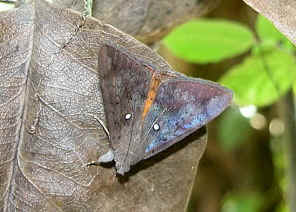 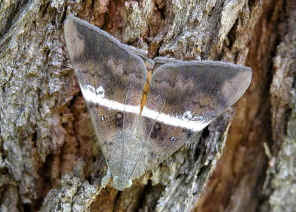 - Oxyodes tricolor, wingspan
30mm
- This moth was hiding under the plants materials on the forest floor during
the day. There are the white dots, resemble eye-spots
pattern on their front wings. The pattern is different among individuals. Some
are even have the white line across their wings. The hidden hind wings are
half orange-yellow and half black, normally covered by forewings. Click here
for more pictures and information.
-
-
- Cotton Looper Moth
 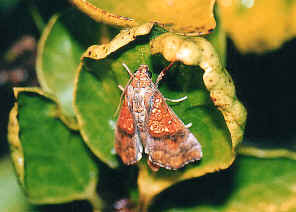
- Anomis flava, body length 20mm
- This moth can be found in summer in our backyard on the Hibiscus
plants. The moth is golden yellow in colour with brown pattern. The
caterpillar is green with white bands between segments. The caterpillar move
in looper style, although it is not in GEOMETRIDAE
family. Please click on here for more
information.
-
-
- Granny's Cloak Moth
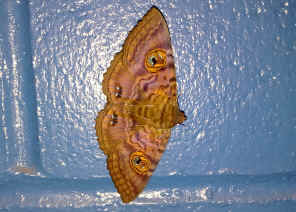 - Speiredonia spectans, wingspan 70mm
- On Nov 2007, we took this photo inside a building's toilet. This moth is brown in colour with
eyespots on front and hind wings. This moth is common found inside buildings
such as garages or sheds. We received email a few times asking what is this
moth inside their house. Their caterpillars feed on Wattle.
-
-
- Brown Noctuid Moth
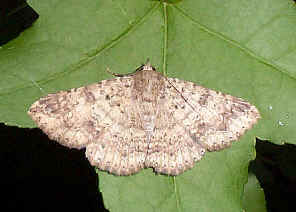 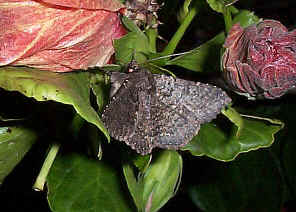 - Ericeia sobria, wingspan 40mm
- We found those dark brown moths and light brown
moths with the slightly different patterns in our backyard, 2002. Check
this page for more information.
-
-
- Common Brown Noctuid Moth
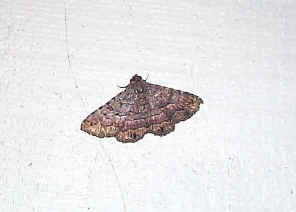 - Diatenes aglossoides, wingspan 40mm
- The Moths is dark brown with complex pattern wings. We found it rested on the wall
outside our house from time to time. Caterpillar feeds on Acacia, pupates on hole or
under loose bark of host tree. Check this page
for more information.
-
-
- Poinciana Looper Moth
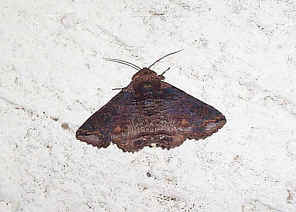 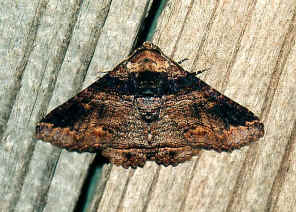
- Pericyma cruegeri, wingspan 40mm
- The moth is brown in colour, with complex pattern of lines and patches. The moth is attracted to window light. We
took the above pictures on the wall and fence outside our house. Caterpillar is
a semi-looper and pale green in colour, feeds on Poinciana (Delonix regia).
Please check this page for more
information.
-
-
- Sugarcane Looper Moth
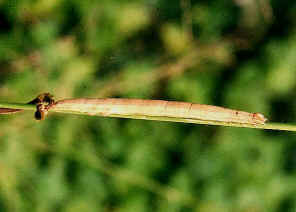
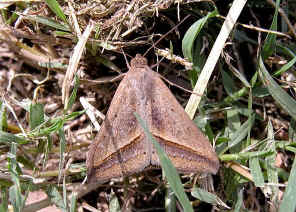 - Mocis frugalis, wingspan 40mm
- When we walked across the Eucalyptus forests in Brisbane, we often
saw many of this moths. They hide among the grasses on the forest floor. When
disturbed, they flied to a meter away, and hind again in the grasses. Their
caterpillars are pale green or brown in colour, feed on various grasses and
Sugarcane. Check this page for more
infromation.
-
-
- Triple-banded Moth
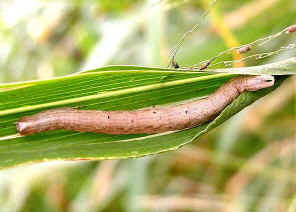 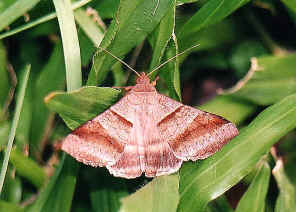 - Mocis trifasciata, caterpillar length 50mm,
adult wingspan 40mm
- The moth is is brown in colour with three darker bands across each
forewing. It is quite common in Brisbane. It is usually hiding on short
grasses during the day, flies to a meter away when disturbed. For more
information please click on here.
-
-
- Discolor Noctuid Moth
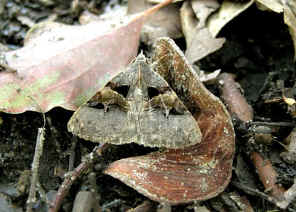 - Avatha discolor, Catocalinae, wingspan 25mm
- This moth is brown in colour with dark brown patterns. The patterns vary
between individuals. The caterpillar is thin and like to rest along the edge
of leaves. Please also check this page.
-
- We noticed in the subfamily Catocalinae there is a group of moths which
are dark brown to black in colours with white strips on wings. When rest,
they all hold their forewings in equilateral triangle shape. Those colours
and shape make them do not look like a moth. We believed those Black
Triangle Moths mimicking each others and form a Mullerian
mimicry complex.
-
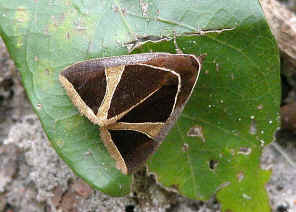 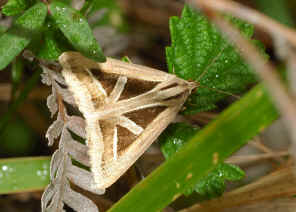
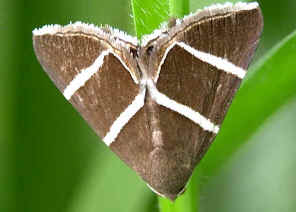 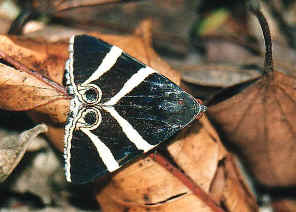 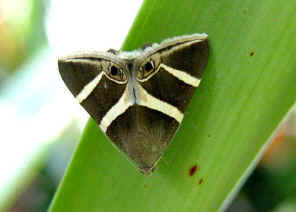 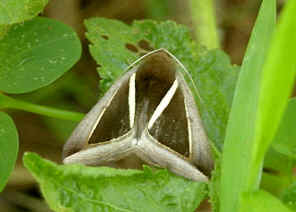 -
- We found six different species in this complex. Check this page
for more information.
-
-
- Achaea Caterpillar
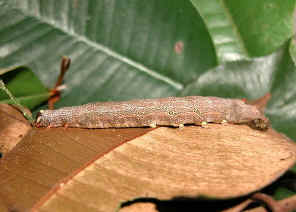
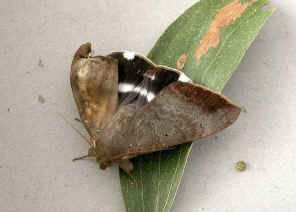 - Achaea sp, caterpillar length 70mm, adult wingspan 70mm
- The caterpillar was found resting along a stem, where the caterpillar camouflaged
as part of the stem. When we came closer to take photos, it dropped onto the ground. We found it
hiding among the plant materials and brought
it home. We took along with some leaves which it was feeding on. More information please click here.
-
-
- Croton Caterpillar
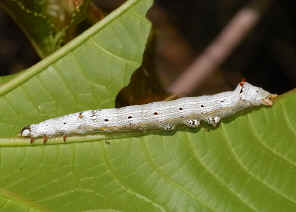
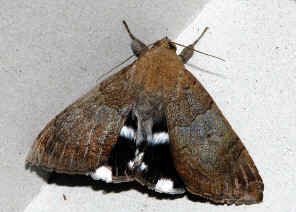 - Achaea janata, length 60mm
- We found this caterpillars on May 2008, near Buhot Creek, Stringybark Trail.
There were quite a number of caterpillars actively feeding the host plants
during the day. We did not found the moth yet. Please also check this page.
-
-
- Guava Moth
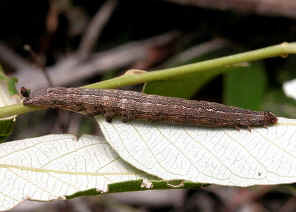
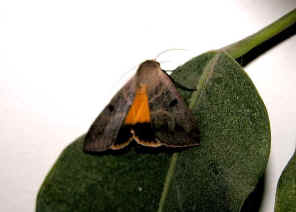 - Ophiusa disjungens, caterpillar length 60mm, adult wingspan 50mm
- The Guava Moth is brown to purple in colour, with a black kidney-shaped
spot near the centre of each forewing. When it opens the wings, we can see
the bright yellow hind wings. Each hind wing has a large black spots near the
wing tip. The caterpillars feed on Gum tree and Guava leaves, consider as
pest on Guava. More pictures and information can be found in this page.
-
-
- Parcemacula Moth
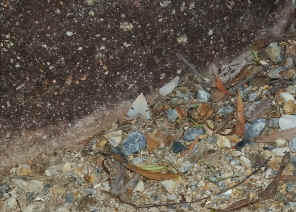
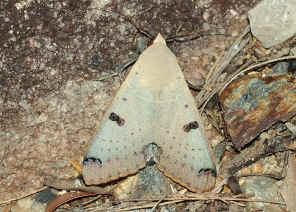 - Ophiusa parcemacula, wingspan 50mm
- Jan 2008, Karawatha Forest, She-oak Area, the moth was resting on the
forest floor. Please also check this page.
- The moths in this genus are large in size. As their common name implied,
most of them have the white band across wings. They also have a large eye spot
on each forewing. The bright orange coloured abdomen is covered by wings when
rest, only be seen during flight. Not much is known about their
caterpillars.
-
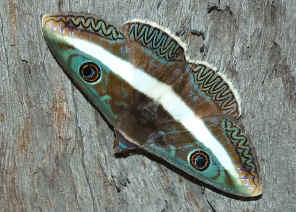
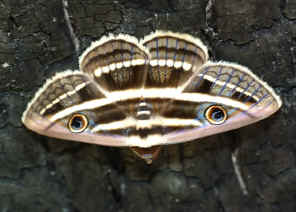
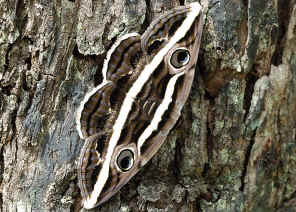
 -
- We found four species in this genus. Check this page
for more details.
-
-
- Erebus Moth
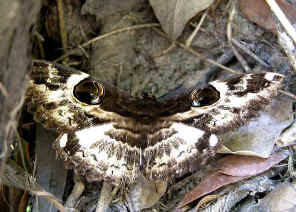
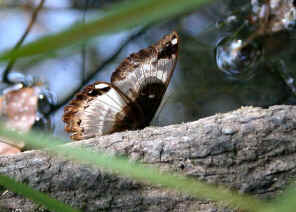 - Erebus terminitincta, wingspan 100mm
- We saw this moth once during late summer in Yugarapul
Park, while we were looking for dragonflies on Bulimba Creek. The moth was
hiding at the overhanging bank of the creek. The moth flied with a slow and fluttering pattern.
Click here for more information and pictures.
-
-
-
- Reference:
- 1. Insects
of Australia, CSIRO, Division of Entomology, Melbourne University
Press, 2nd Edition 1991, p912.
- 2. Moths
of Australia - I. F. B. Common, Melbourne University Press,
1990, p448.
- 3. CATOCALINAE
in Australia - Don Herbison-Evans & Stella Crossley, 2007.
[ Up ] [ CATOCALINAE ] [ ACONTIINAE ] [ EUTELINAE ] [ NOLINAE ] [ CHLOEPHORINAE ] [ PLUSIINAE ] [ ACRONICTINAE - AMPHIPYRINAE ] [ AGARISTINAE ] [ HADENINAE ] [ HELIOTHINAE ] [ Unknown Noctuid ]
Back to Top
| |
|







































